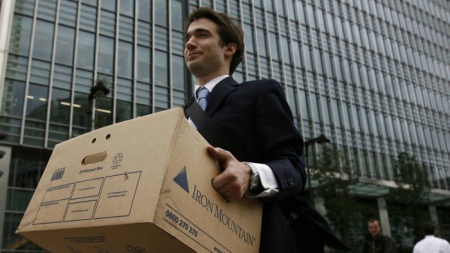Prime broker solvency
The Lehman insolvency — cue thundercrack — was a chastening experience for some hedge funds who discovered to their dismay that the assets they had bought on margin with Lehman — which they thought Lehman was holding safely in a little shoebox under its bed for them — were not in a shoe-box after all. They turned out to be rather harder to get back than they expected.
|
Prime Brokerage Anatomy™

|
The assets hadn’t all gone awol as such, but were somewhat caught in the gears of the great steampunk machine. It didn’t help that Lehman’s custody record-keeping was a bit slipshod. This fact alone has launched the careers of a thousand CASS compliance officers.
The financial crisis generally led to intense focus on bank solvency — and no small amoung of regulatory fiddling — to the point where fifteen years on the world is a very different place, and our view — coloured by a decade advising prime brokers, granted, so seeing things through their tinted spectacles, but still — is that prime brokerage customers should spend a more time managing what is really an extreme tail risk, that of their prime broker fail during their relationship, and less time trying to provide for it in the abstract when they negotiate their master agreements.[1]
It works like this: a customer can unwind its positions, repay its lending and withdraw its assets at will, on any day. As long as you pay the prime broker back, it will just give you back your assets, or, at your choice, their money’s worth. Now, seeing as fully capitalised regulated financial institutions do not typically collapse overnight — Lehman was fast, and its final slide was fairly constant and took about seven months — if you are half-way paying attention there is plenty of time to get your assets out before your PB took them corkscrewing into a ditch. Hedge fund managers are meant to understand the equity market. Look at the equity of your prime broker![2]
In any case since 2008 the FCA has significantly tightened its CASS customer asset segregation rules, and now obliges prime brokers to cover any custody shortfall with their own assets. And the world’s financial regulators have introduced broadly similar bail-in and bank resolution regimes, meaning the resolution of failing banks will be a much more managed process than it used to be, with the main goal of protecting the overall financial system from the shock of the failure of a significant credit institution.
Should a hedge fund, nonetheless, be asleep at the switch and miss its prime broker’s pending implosion, then the prime broker’s solvency regime isn’t really the thing that makes recovering client assets hard. Rather it will be (i) unwinding any reuse/rehypothecation arrangements and (ii) satisfying outstanding indebtedness and releasing any security interests over the assets. Neither of these things are a function of the insolvency regime of the broker.
Resolving reuse/rehypothecation
Under an English law reuse arrangement, a customer is an unsecured creditor of its prime broker for the return of equivalent reused assets. Where the return obligation offsets the customer’s liability under its margin loan portfolio, this is a zero-sum game, but generally the reuse multiplier will be more than 100% and may be as much as 140%: for this balance, the customer has prime broker credit risk.
Under a New York law rehypothecation arrangement, this is not necessarily true, because under one of those typically alchemical US legal constructs, a customer retains ownership of rehypothecated assets even while its prime broker sells them outright into the market. So, at least in theory, inside the prime broker’s books and records the customer has a preferred claim to the rehypothecated asset over other creditors of the bank. What this means in practice may be quite different (to what a US customer expects, and quite similar to what an English one would get).
Even if you recover all the reused assets and return them to the prime brokerage custody account, there is another obstacle: the security interest. This is likely to delay return of your asset, because the banks administrator will want to make sure that every conceivable debt claim for which the assets are security is recovered first — or applied against the assets — before any security is released. and here the “kitchen-sink” security model that all prime brokers use will gum things up. For prime brokers take security against not just close-out liabilities due under identified maser agreements, but, you know, “any indebtedness, claim, liability, damage or loss, present or future, direct or indirect, contingent or otherwise, that Client or Client’s affiliates, friends or relations, jointly or severally, may owe to Prime Broker, its affiliates and any of its employees, officers directors, agents or advisors however described”. Right?
See also
References
- ↑ For what it is worth, we say the same to prime brokerage risk teams about NAV triggers. because, frankly, it is all rather tiresome.
- ↑ By contrast, the collapse of hedge funds can be very fast. See our old friend Archegos. And LTCM, and Amaranth, and Madoff... [All right, you have made your point. Ed]